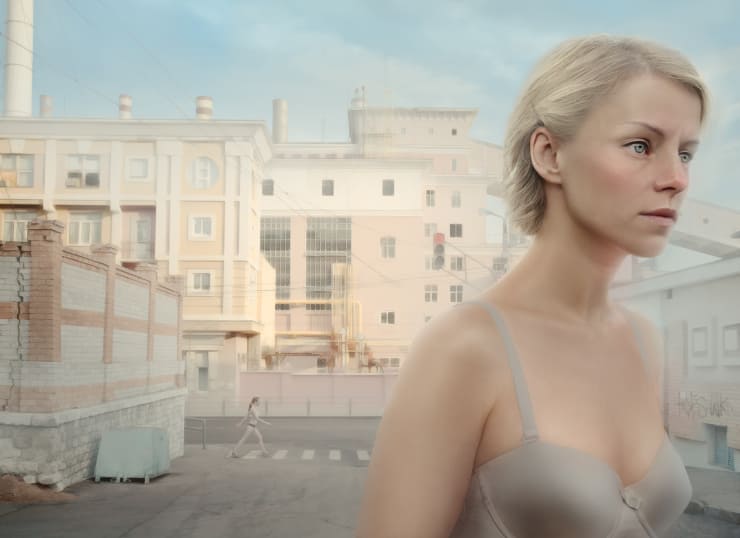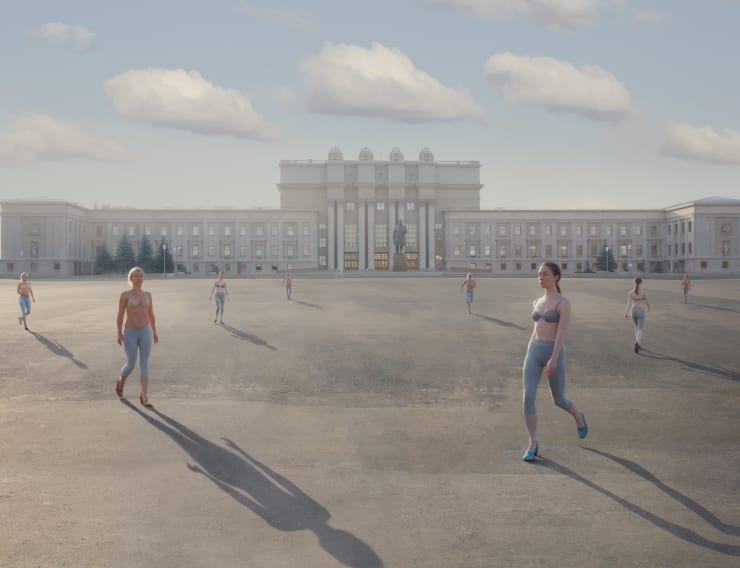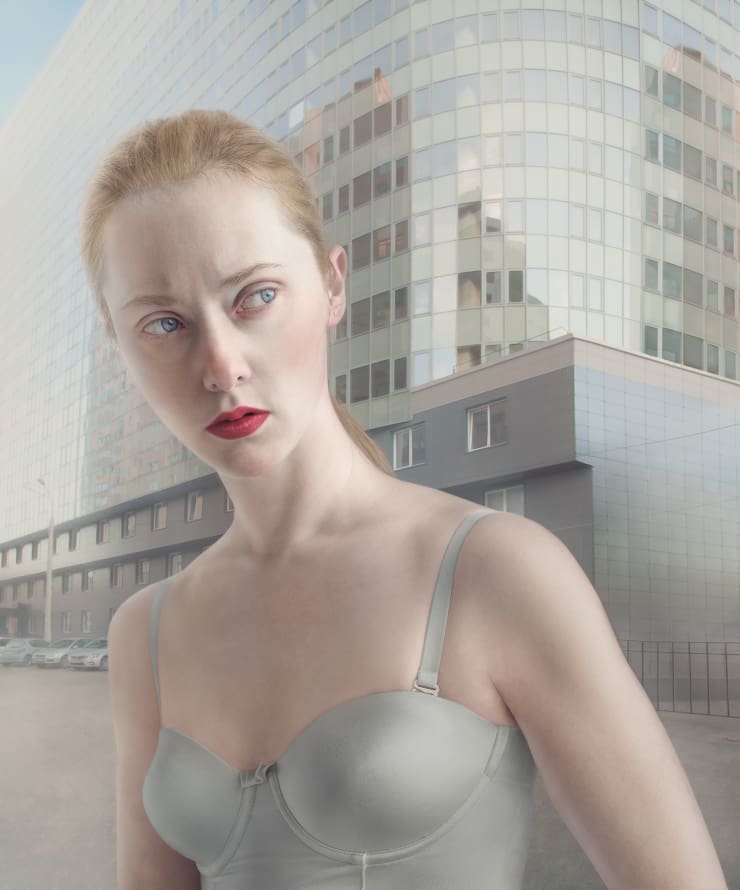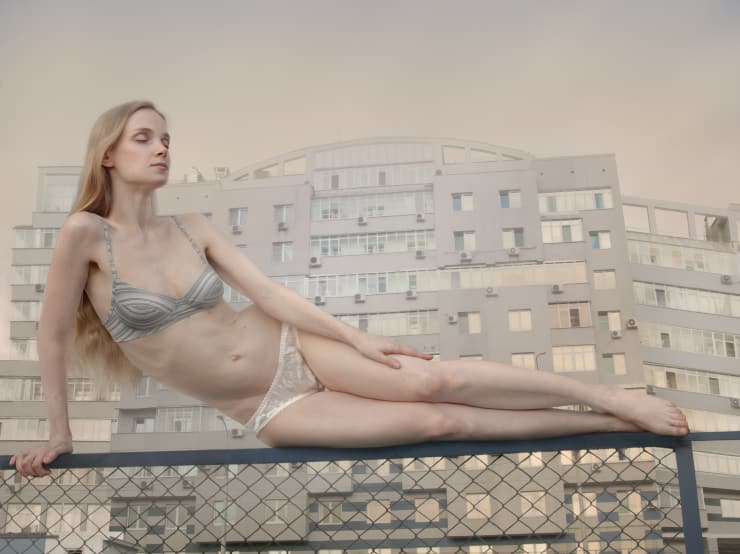There is an average city where time has stopped. It is the epitome of an average city on the planet. In different times, a lot of things were created here, a lot of things went under and were rebuilt. Everything here is full of contrasts: the light and the heavy, the rich and the poor, the beautiful and the ugly, and the polarities of the male and the female. We do not see any men in the series. They have dissolved in the surrounding atmosphere. Yet we feel their presence and influence at every turn. The space visualizes everything masculine: the Soviet and post-Soviet architecture, the frozen air, the emptiness, the anonymity and at the same time power and inflexibility.
The woman is the smartest apparition in a place like this and she is striving to leave it. There is no present here, no future and no delight in being a woman. In a city like this, she has a special enormous responsibility. Woman and man must be equal — strong and successful. “Successful” here is to be understood in the classic patriarchal sense of the essence of being female. She is just a beautiful shell to be filled with the “right” and “fitting” substance. Under the pressures of society and Stockholm syndrome, she lives in constant competition for a place next to the man.
Purposeful forward movement and self-representation as a commodity are the rules of the game for modern women in Eastern Europe — rules that are adapted to the times but remain basically the same. The woman does not belong to herself. Exposing herself to the public eye is only one way of attracting attention. Underwear and heels are the attributes of the hurrying woman. They are necessary uniforms as well as being a “sword and shield” — a metaphorical symbol of attack and protection.
The woman is the smartest apparition in a place like this and she is striving to leave it. There is no present here, no future and no delight in being a woman. In a city like this, she has a special enormous responsibility. Woman and man must be equal — strong and successful. “Successful” here is to be understood in the classic patriarchal sense of the essence of being female. She is just a beautiful shell to be filled with the “right” and “fitting” substance. Under the pressures of society and Stockholm syndrome, she lives in constant competition for a place next to the man.
Purposeful forward movement and self-representation as a commodity are the rules of the game for modern women in Eastern Europe — rules that are adapted to the times but remain basically the same. The woman does not belong to herself. Exposing herself to the public eye is only one way of attracting attention. Underwear and heels are the attributes of the hurrying woman. They are necessary uniforms as well as being a “sword and shield” — a metaphorical symbol of attack and protection.









